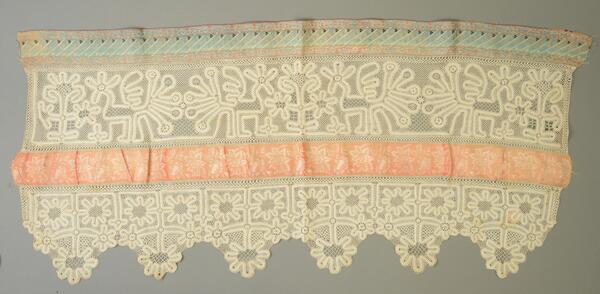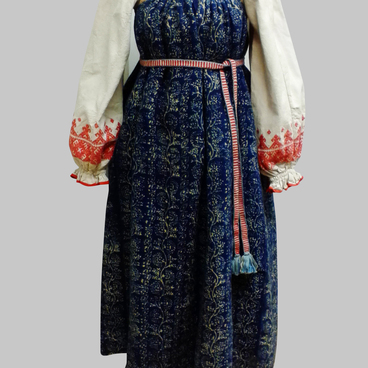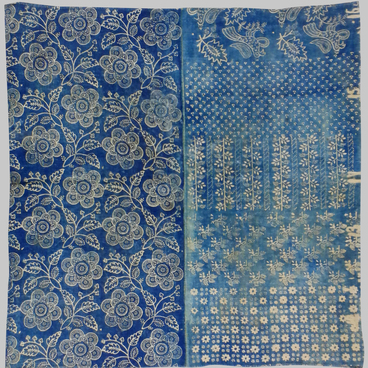Towels, rushnyks (a kind of homespun canvas towels) and other embroidered items played a significant role in the life of the peoples of Russia. They were used to decorate icons and in various rituals. The edges of the towels were richly decorated with lace and embroidery. The exhibited bedskirts (lace frills) from Galich, Kostroma province, Torzhok, Tver province and other regions consist of strips of lace — silk, sometimes with gold thread, and patterned silk ribbons. The bedskirts were sewn not only to the towels, but also, for example, to the long edges of the sheet, so that when the bed was made, it remained open and hung over the floor.
Lace weaving is a technically complex process that requires several devices, the main of which is bobbins, wooden sticks with a neck on which the yarn is wound. The threads are tied in pairs. Depending on the complexity of the pattern, a different number of pairs of bobbins is required. Sometimes there are hundreds.
Three different methods of lace-making were formed: numerical, multi-pair and coupling. The most difficult method is multi-pair, it uses the largest number bobbins’ pairs. Less bobbins are needed when lace is attached. The basis of the patterns of the coupling technique is a continuous braided strip, the free bends of which form a pattern. The bends are interconnected by a more or less sparse mesh, called “couple”, which is made with a chain hook. The common name for this lace is guipure.
In Torzhok, Tver province, lace-making appeared quite early, and since the 18th century, coupling technique prevailed in this area. Different regions developed not only their own weaving techniques, but also their own traditional ornaments. Some of them eventually began to be used everywhere. As, for example, the composition on the bedskirt presented in the exposition — birds on two sides of a tree. The bird singing at dawn was considered in ancient times to be the messenger of the sun. A common tree motif is also associated with ancient pagan beliefs. Plant and zoomorphic motifs and their various combinations by the time of the appearance of lace had already firmly taken root in the more ancient art of embroidery, and from there they moved on to lace.
Lace weaving is a technically complex process that requires several devices, the main of which is bobbins, wooden sticks with a neck on which the yarn is wound. The threads are tied in pairs. Depending on the complexity of the pattern, a different number of pairs of bobbins is required. Sometimes there are hundreds.
Three different methods of lace-making were formed: numerical, multi-pair and coupling. The most difficult method is multi-pair, it uses the largest number bobbins’ pairs. Less bobbins are needed when lace is attached. The basis of the patterns of the coupling technique is a continuous braided strip, the free bends of which form a pattern. The bends are interconnected by a more or less sparse mesh, called “couple”, which is made with a chain hook. The common name for this lace is guipure.
In Torzhok, Tver province, lace-making appeared quite early, and since the 18th century, coupling technique prevailed in this area. Different regions developed not only their own weaving techniques, but also their own traditional ornaments. Some of them eventually began to be used everywhere. As, for example, the composition on the bedskirt presented in the exposition — birds on two sides of a tree. The bird singing at dawn was considered in ancient times to be the messenger of the sun. A common tree motif is also associated with ancient pagan beliefs. Plant and zoomorphic motifs and their various combinations by the time of the appearance of lace had already firmly taken root in the more ancient art of embroidery, and from there they moved on to lace.



